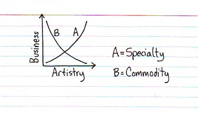 Last week the New York Times published a piece titled $200 Textbook vs. Free. You Do the Math by Ashlee Vance.
Last week the New York Times published a piece titled $200 Textbook vs. Free. You Do the Math by Ashlee Vance.
Today we take up the challenge posed in the title and demonstrate that Open Source Textbooks are twice as expensive as books in the K12 market.
Let me state right up front that I’m all for using economic and technology forces to drive costs down while improving services. I agree that Open Source instructional materials have a place and will play a role in coming years in doing exactly this. But they are not the panacea painted by their advocates in the article.
 The Education Business Blog
The Education Business Blog


 On-line bullying has been a concern as long as the web has been around. Yet only now, with the proliferation of social networks, is it really getting its due. Today’s New York Times has an
On-line bullying has been a concern as long as the web has been around. Yet only now, with the proliferation of social networks, is it really getting its due. Today’s New York Times has an